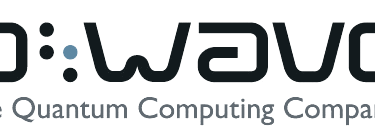

D-Wave Systems, founded in 1999 and based in Burnaby, Canada, is a pioneer in the field of quantum computing, particularly known for its development of quantum annealing processors. In recent years, D-Wave has also expanded its focus to include gate-model quantum computing, positioning itself as a comprehensive quantum technology provider.
At the core of D-Wave's technology is their superconducting qubit architecture. Their quantum processors operate at extremely low temperatures, typically around 15 millikelvin, achieved using sophisticated dilution refrigerators. This extreme cold is necessary to maintain the quantum coherence of the superconducting circuits and minimize thermal noise.
D-Wave's flagship technology is based on quantum annealing, a specialized form of quantum computation designed to solve optimization problems and sample from complex probability distributions. The quantum annealing processor uses a type of superconducting qubit called a flux qubit. These qubits are designed to have two stable states representing different directions of persistent current in a superconducting loop, analogous to the spin-up and spin-down states of a spin-1/2 particle.
The quantum annealing process in D-Wave's systems can be described by the time-dependent Hamiltonian:
H(t) = A(t)H_initial + B(t)H_problem
Where H_initial is typically a transverse field that creates quantum superpositions, and H_problem encodes the optimization problem to be solved. The functions A(t) and B(t) control the annealing schedule, gradually transitioning the system from H_initial to H_problem.
D-Wave's latest quantum annealing processor, the Advantage system, features over 5000 qubits and 15-way qubit connectivity. This increased qubit count and connectivity allows for the encoding of larger and more complex optimization problems. The qubits are arranged in a Pegasus topology, which provides richer connectivity than previous generations, potentially enabling more efficient problem embedding and solving.
The company has developed a comprehensive software stack to support their quantum annealing systems. This includes tools for problem embedding, which maps real-world optimization problems onto the physical qubit topology, and hybrid quantum-classical algorithms that combine the strengths of quantum annealing with classical optimization techniques.
In addition to quantum annealing, D-Wave has recently ventured into gate-model quantum computing. This universal approach to quantum computation allows for a broader range of quantum algorithms beyond optimization. D-Wave's gate-model system is based on flux qubits, similar to their annealing processors, but designed for coherent quantum operations.
The gate-model architecture employs a set of universal quantum gates, including:
- Single-qubit rotations: Implemented using microwave pulses to control the qubit state on the Bloch sphere.
- Two-qubit entangling gates: Likely implemented using tunable couplers between adjacent qubits.
D-Wave faces several quantum-specific challenges in both their annealing and gate-model systems:
1. Coherence time: While quantum annealing is less sensitive to decoherence than gate-model quantum computing, maintaining qubit coherence throughout the annealing process is crucial for performance.
2. Qubit connectivity: Increasing the connectivity between qubits is essential for efficient problem embedding but presents challenges in terms of crosstalk and fabrication complexity.
3. Error correction: Developing error correction techniques suitable for both quantum annealing and gate-model computation is an ongoing area of research.
4. Scaling: As the number of qubits increases, managing flux noise, maintaining uniformity across the chip, and providing sufficient control lines become increasingly challenging.
D-Wave has been at the forefront of exploring practical applications of quantum annealing. Some areas where their technology has shown promise include:
- Portfolio optimization in finance
- Drug discovery and protein folding simulations in pharmaceuticals
- Supply chain optimization in logistics
- Traffic flow optimization in smart cities
- Machine learning tasks such as feature selection and clustering
As D-Wave continues to advance both their quantum annealing and gate-model technologies, they are working towards demonstrating quantum advantage - the point at which quantum computers can solve problems beyond the reach of classical computers. Their dual approach positions them uniquely in the quantum computing landscape, offering both specialized optimization hardware and the potential for universal quantum computation.
The company's recent focus on hybrid quantum-classical computing recognizes that near-term quantum advantage is likely to come from combining quantum and classical resources. This approach allows for leveraging the strengths of quantum computation while mitigating its current limitations in terms of qubit count and error rates.
Looking forward, D-Wave is actively researching ways to improve qubit coherence, increase qubit connectivity, and develop more sophisticated control systems. They are also exploring the integration of quantum annealing and gate-model approaches, which could potentially lead to novel quantum computing paradigms that combine the strengths of both methods.
